- Your cart is empty
- Continue Shopping
BPHCT-137 WAVES AND OPTICS
Solved Assignment 2020-2021
Tutor Marked Assignment
WAVES AND OPTICS
Course Code: BPHCT-137
Assignment Code: BPHCT-137/TMA/2021
Max. Marks: 100
| Title Name | BPHCT-137 Solved Assignment 2020-2021 |
| University | IGNOU |
| Service Type | Solved Assignment (Soft copy/PDF) |
| Course | BSCG |
| Language | ENGLISH |
| Semester | 2020-2021 Course: B.SC(G) CBCS |
| Session | 2020-21 |
| Short Name | BPHCT-137 (ENGLISH) |
| Assignment Code | BPHCT-137/TMA/2021 |
| Product | Assignment of BSCG 2020-2021 (IGNOU) |
| Submission Date | This assignment is valid from 1st January, 2021 to 31st December, 2021. If you have failed in this assignment or fail to submit it by 31st December, 2021, then you need to get the assignment for the year 2022, and submit it as per the instructions given in the Programme Guide. |
| Price | RS. 50 |
1. a) The mathematical expression for one dimensional wave travelling along the
positive x-direction is given as
y(x,t) 0.02 sin(42 x 1886t)m
where x is in meters and t is in seconds. Determine the direction of propagation of
the wave and calculate its amplitude, wavelength, frequency and velocity. (25)
b) Determine the frequencies of the fundamental mode and the next two harmonics
that can be set up on a sitar string of length 1.0 m. Take the speed of waves of the
string to be 2.8 10 ms . 3 1 (5)
c) The electric field vectors of two light waves propagating along the positive zdirection are given as
E1(z,t) xˆ E01cos(kz t)
E2(z,t) yˆ E02cos(kz t )
where xˆ and yˆ are unit vectors along x and y-axes, respectively. Show that when
these two waves superpose, we obtain elliptically polarised light. Also show that
the linear and circular polarisations are special cases of elliptical polarisation. (5+5)
2. a) Derive an expression for the displacement of the nth bright fringe in Young’s
double-slit experiment when a thin transparent plate of refractive index and
thickness t is introduced in the path of one of the constituent interfering beams of
light. Will there be any change in the fringe-width after the introduction of the
plate? (8+2)
b) i) Distinguish between fringes of equal inclination and fringes of equal thickness. (5)
ii) Newton’s rings are formed in reflected light of wavelength 5890 108 cm with a
liquid between the plane and curved surfaces. The diameter of the fifth ring is
0.3 cm and the radius of curvature of the curved surface is 100 cm. Calculate
the refractive index of the liquid, when the ring is bright. (5)
c) Explain how Michelson interferometer is used to determine the refractive index of a
thin plate. (5)
PART B
3. a) What is a zone plate? How does a positive zone plate differ from a negative zone
plate? Show that each Fresnel zone has nearly the same area. (3+3+4)
4
b) In the Fraunhofer diffraction pattern due to a single slit, the intensity of the central
spot is maximum. Explain on the basis of geometrical considerations. (5)
c) The Fraunhofer diffraction pattern due to a single slit of width 0.4 cm is obtained
with the help of a lens of focal length 30 cm. If the wavelength of light used is
5890 Å, calculate the distance of the first dark fringe and the consecutive bright
fringe from the axis. (5)
d) The radius of the fifth zone of a zone plate is 2 mm. Considering the zone plate as
a converging lens, calculate its focal length for light of wavelength 4800 Å. (5)
4. a) What do you understand by spatial and temporal coherence? (3)
b) Explain the meaning of coherence length. (3)
c) What is the difference between spontaneous emission of radiation and stimulated
emission of radiation? (3)
d) How is holography different from ordinary photography? (3)
e) What are the advantages of using optical fibre as communication medium? (3)
5. a) In a laser, the lasing levels are the first excited state and the ground state of the
active medium. If the energy of the first excited state is 1.5eV, calculate the
frequency of the laser light. (5)
b) The refractive index of the core and cladding materials of an optical fibre is 1.46
and 1.38, respectively. Calculate the critical angle, numerical aperture and
acceptance angle at the air-fibre interface.
BPHCT-137, BPHCT 137, BPHCT137





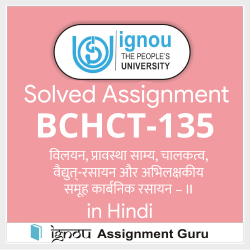
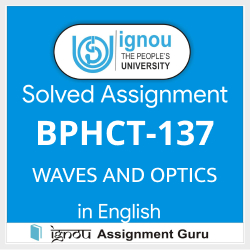
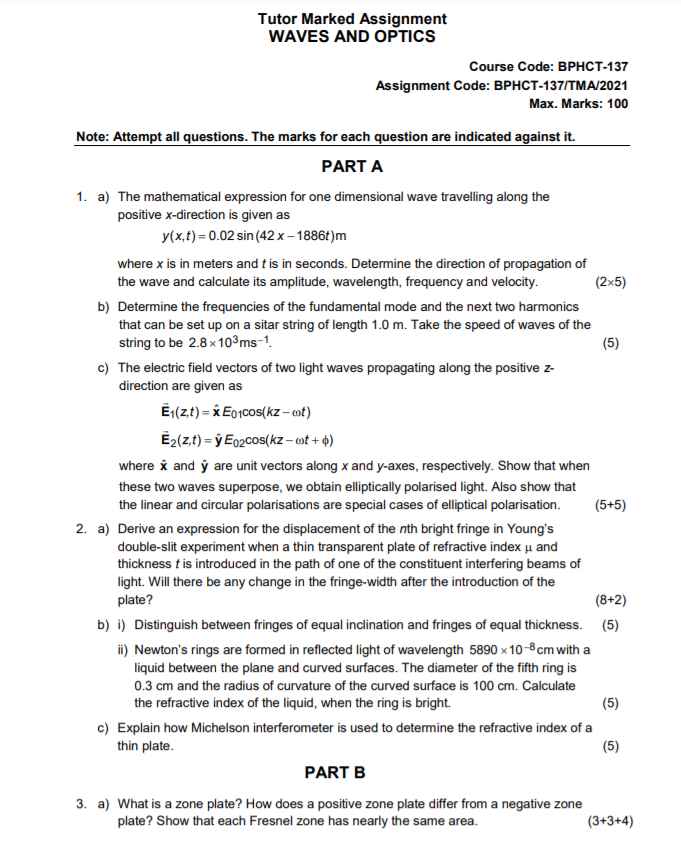
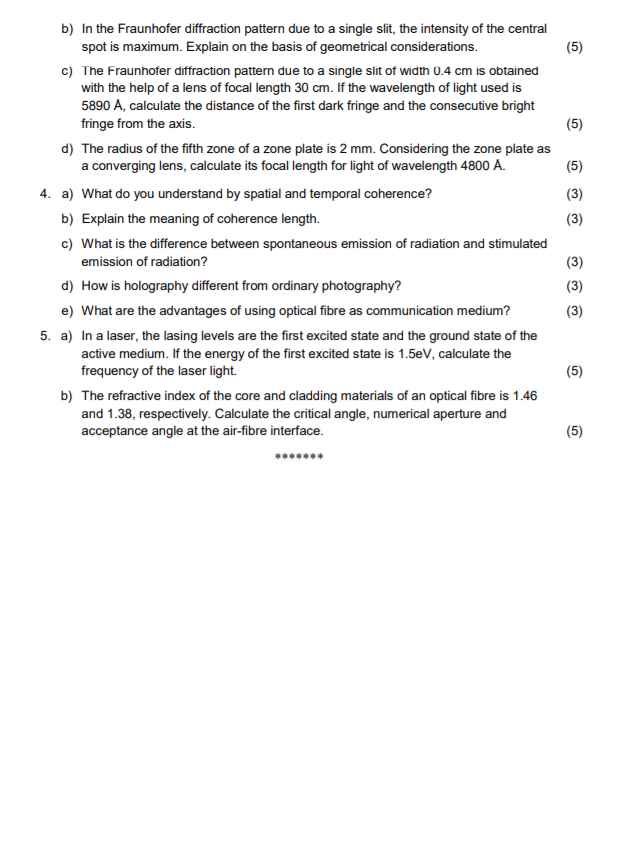


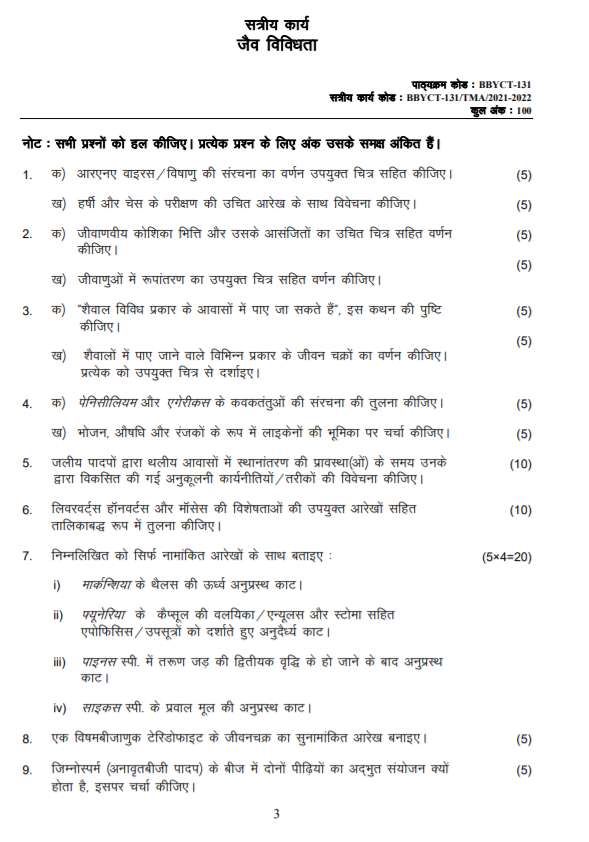

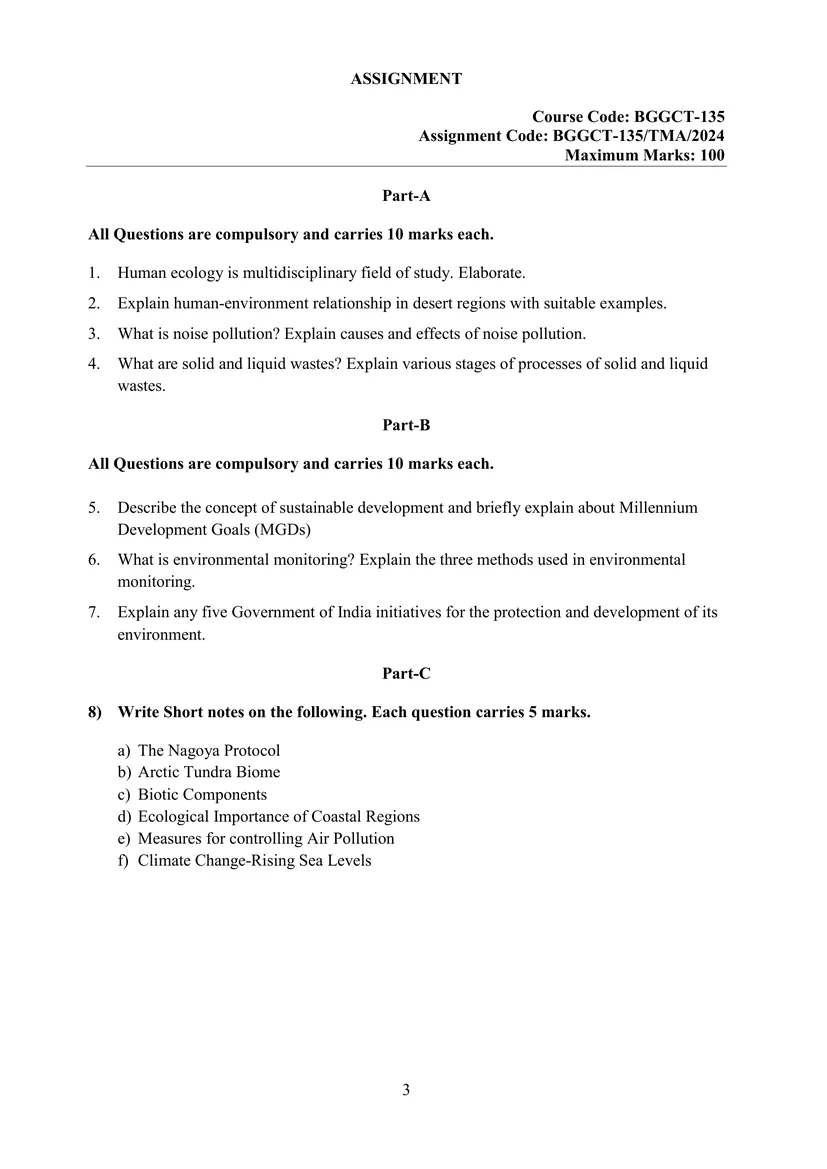

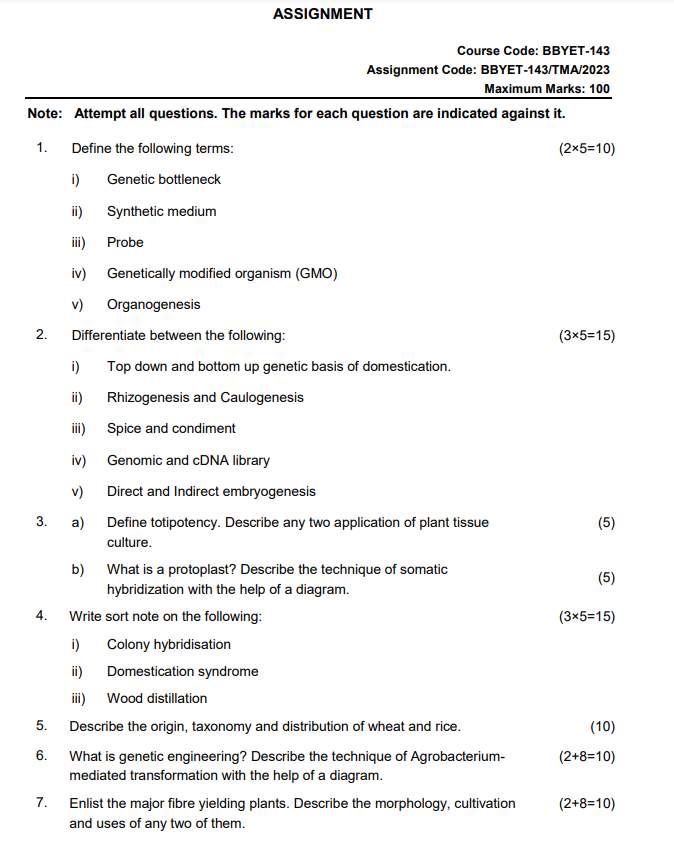


Reviews
There are no reviews yet.